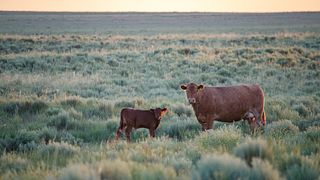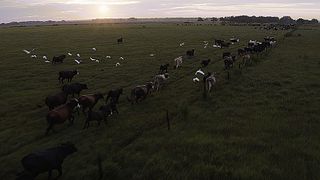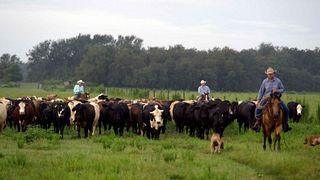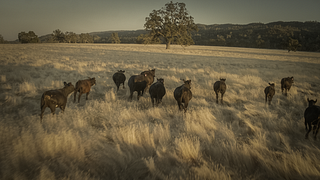Beef in a Healthy, Sustainable Diet
Beef is nourishing and sustainable.1,5,6 It promotes health and helps prevent nutrient deficiencies.4 Environmentally, cattle play a unique role in our food system because they upgrade inedible plants to high-quality protein.2,3 Most people are already eating beef within global dietary guidelines4, so we believe the biggest opportunity for a healthy sustainable diet will come from reducing food waste, including beef, eating fewer empty calories and enjoying more balanced meals.
NEW USDA BEEF LIFECYCLE ASSESSMENT FINDS ENVIRONMENTAL IMPACTS LOWER THAN PERCEIVED
A new study, recently published in the journal Agricultural Systems, is the most comprehensive beef cattle lifecycle assessment ever completed. In the report, titled Environmental Footprints of Beef Cattle Production in the United States, the researchers found widely accepted measures related to beef cattle’s impact in the U.S. are often overestimated.
Beef Sustainability Fact Vs Myth
Discover the truth to the myths surrounding beef sustainability.
frequently asked questions about beef in a healthy, sustainable diet
We all know beef tastes great – but did you know that it can be sustainable too? Check out some answers to your most pressing questions when it comes to beef’s role in a healthy, sustainable diet.
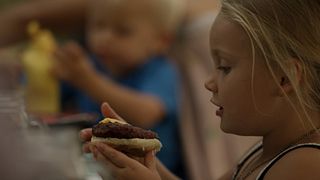
Sustainable nutrition: a new term for an old concern
Food security is a most basic human need. Historical accounts show that for centuries, human societies around the world have raised concerns about our food supply. This contemplation has driven innovation and we have, quite successfully, adapted to feed and nourish people.
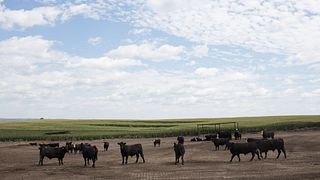
Why food nostalgia won't make us more sustainable
We have a grand challenge ahead in the next three decades. Our global population is projected to increase by 2 billion, yet we will not have an appreciable increase in agricultural land. Our challenge is to nourish a global population of increasing affluence without degrading the earth’s resources or compromising the success of future generations.
brackett ranches
Explore Brackett Ranches on the Idaho and Oregon border to learn how a ranch utilizes and acts as a steward to public lands.
triple u ranch
Take a behind-the-scenes look at a cow/calf ranch to see how cattle are raised at the Triple U Ranch in Iowa.
- US Department of Agriculture, Agricultural Research Service, Nutrient Data Laboratory. USDA National Nutrient Database for Standard Reference, Legacy. Version Current: April 2018. Internet: /nea/bhnrc/ndl
- Council for Agricultural Science and Technology (CAST). 1999. Animal Agriculture and Global Food Supply. Task force report N. 135 July 1999, Department of Animal Science, University of California, Davis, CA, USA. Available at: http://agrienvarchive.ca/bioenergy/download/anag.pdf
- National Academies of Sciences, Engineering, and Medicine. 2016. Nutrient Requirements of Beef Cattle: Eighth Revised Edition. Washington, DC: The National Academies Press. https://doi.org/10.17226/19014
- McNeill S, Van Elswyk ME. Red meat in global nutrition. Meat Sci. 2012 Nov;92(3):166-73. doi: 10.1016/j.meatsci.2012.03.014. Epub 2012 Apr 1.
- United States. Department of Health and Human Services., United States. Department ofAgriculture., United States. Dietary Guidelines Advisory Committee. Dietary guidelines forAmericans, 2015-2020. Eighth edition. ed. Washington, D.C.: U.S. Department of Health andHuman Services and U.S. Department of Agriculture; 2015. https://www.cdc.gov/nchs/data/hestat/obesity_adult_07_08/obesity_adult_07_08.pdf
White, RR, Hall MB. Nutritional and greenhouse gas impacts of removing animals from US agriculture. Proc Natl Acad Sci U S A. 2017 Nov 28;114(48):E10301-E10308.
